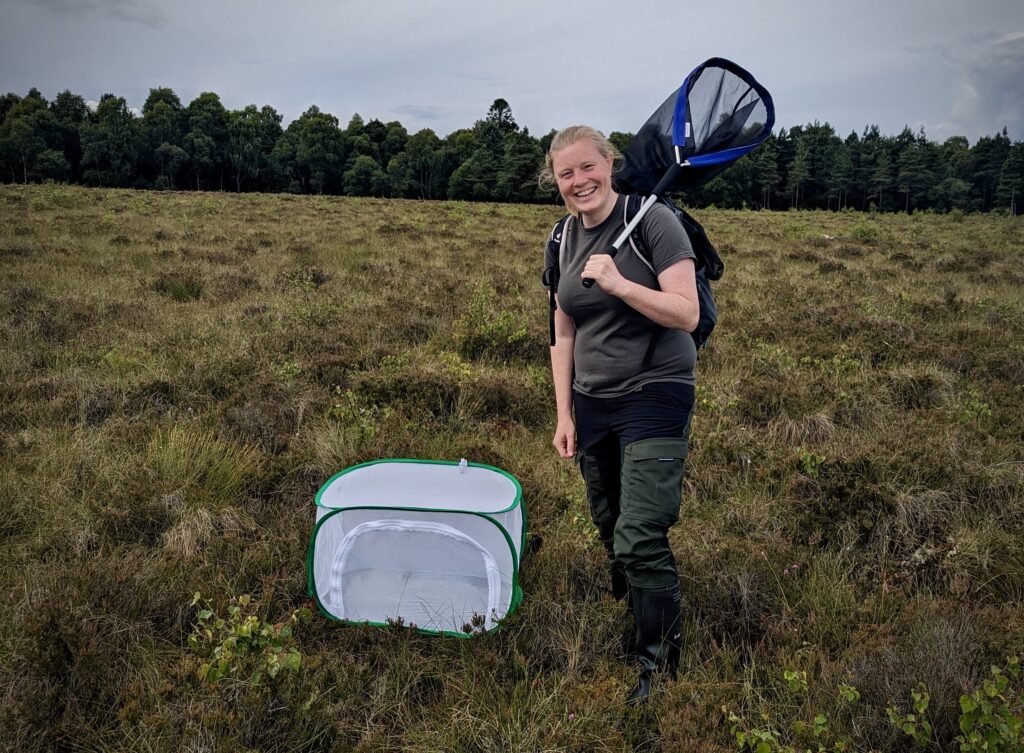Butterfly to offer “canary in coalmine” for Scottish peatland habitats
A new study into a butterfly that only lives in Scottish peatlands hopes to unlock how it and other species are coping with the loss and fragmentation of their specialist habitats.
Scientists at The James Hutton Institute will use high-tech genetic analysis of the Scotica, a subspecies of the Large Heath butterfly, to understand how healthy, in terms of genetic diversity, they are.
This will then tell them if Scoticas are at risk from further loss or fragmentation of their unique habitat, making them a potential “canary in the coal mine” for other species that rely on these peatlands.
Across the UK, populations of the Large Heath butterfly fell by nearly 60% since the 1970s, with very few now found in England, Northern Ireland and Wales, as the peatlands and damp bogs that they like have dwindled in extent. However, abundance has been seen to increase in recent years and they are still relatively widespread in Scotland, where the Scotica subspecies lives.
Dr Victoria Buswell, an ecological bioinformatician, at the Hutton, says, “This is a specialist species that needs peatlands or wetlands to survive. Even then, they are potentially at risk because they only live in small populations, with adults travelling no more than 500 m from their ideal habitat.
“If these populations are isolated and individuals do not travel between sites, their genetic diversity could suffer. This can result in inbreeding, reductions in their numbers and increased probability of becoming locally extinct with no hope of naturally repopulating an area.
“This is a specialist species that needs peatlands or wetlands to survive. Even then, they are potentially at risk because they only live in small populations, with adults travelling no more than 500 m from their ideal habitat”
Dr Victoria Buswell

“If these populations are isolated and individuals do not travel between sites, their genetic diversity could suffer. This can result in inbreeding, reductions in their numbers and increased probability of becoming locally extinct with no hope of naturally repopulating an area.
“By examining genetic diversity between different populations, we can start to build a picture of how at-risk they are and help guide conservationists on measures to take to protect and even reintroduce them.
“Their genetic diversity will also indicate wider peatland habitat connectivity, helping researchers understand how at risk other species reliant on these habitats could be. It’s a potential ‘canary in the coal mine’ indicator.”
Patrick Cook, Ecologist at the charity Butterfly Conservation, says, “Large Heath is one of our most important butterfly species for conservation efforts and is found only in peatlands. Understanding how the butterfly moves between populations in Scotland is vital to their long-term successful conservation. The results of this study will help inform Butterfly Conservation in our work to target restoration of peatlands for Large Heath, whilst also delivering vitally important work to better store carbon in peatlands.”
The study was recently awarded Seedcorn funding from the institute via the Scottish Government’s Underpinning National Capacity funding.
It is hoped that the study of the Large Heath butterfly could eventually be extended to include deeper examination of the habitat it lives in, how it has adapted and its distribution on a wider scale.
More information
The study will use the butterfly’s RNA (ribonucleic acid), which can allow scientists to investigate the genetic diversity of plants and animals when there is no other genetic information about that species available, such as DNA, the sequencing of which can take a prohibitively long time and high cost.
DNA, or deoxyribonucleic acid, is the information that all organisms’ biological instructions. Each has its own and it remains the same through a plant or animal’s life. RNA is often described as an expression of DNA.
“While RNA sequencing is still a large undertaking, it should mean we can do this study without the long a difficult groundwork needed for DNA sequencing,” says Buswell. “Usually for DNA work a reference genome is required for us to compare our work to. However, this does not exist for this species and that is where our RNA method comes in. By using this method, we are testing to see if we capture enough information from the genome to answer questions around diversity and population connectivity, which is exciting.”
Another benefit is that RNA allows scientists to examine the functional differences between populations. Functional differences are differences in how genes are expressed, which is like a cooking process where the information in your DNA is transformed into proteins, which carry out many important tasks in your body. Examining this can give insight into how different populations are adapting.
Press and media enquiries:
Elaine Maslin, Media Officer, The James Hutton Institute elaine.maslin@hutton.ac.uk, tel: +44 (0)1224 395076 or +44 (0)7977 805808
December 18, 2023
